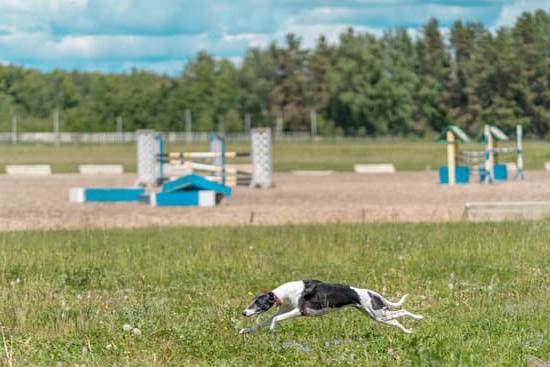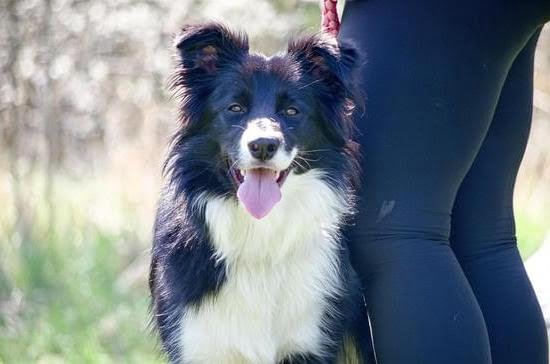Biking with your dog can be a fantastic way to enjoy the outdoors while incorporating exercise for both you and your furry friend. Not only does it provide physical benefits, such as increased endurance and cardiovascular health, but it also offers mental stimulation and a chance for bonding. However, before embarking on this adventure, proper training is crucial to ensure a safe and enjoyable experience for both you and your dog.
Engaging in biking activities with your dog has numerous advantages. Dogs are naturally active animals that thrive on physical activity. Biking helps to release their excess energy, reducing the chances of them engaging in destructive behaviors at home. Regular exercise also promotes healthy weight management and prevents obesity-related issues in dogs. Furthermore, biking can be mentally stimulating for your canine companion as they get to explore new environments and encounter different scents along the way.
To make the most out of biking with your dog, it is important to train them properly and use suitable equipment. In this article, we will guide you through each step of the training process, from choosing the right equipment to conditioning both yourself and your furry friend for this endeavor.
We will also cover various aspects of obedience training specific to biking, such as teaching commands like “heel” and “stop.” Additionally, we will offer tips on how to gradually introduce your dog to the bike and provide leash training techniques for a smooth ride.
Remember that patience and consistency are key when training your dog to bike with you. With proper guidance and dedication, you can create an amazing bond with your four-legged companion while enjoying many adventures together on two wheels. So get ready to embark on this incredible journey – let’s dive into the world of training your dog to bike with you.
Choosing the Right Equipment
Introduction: Why Choosing the Right Equipment Matters
Before embarking on your biking adventures with your dog, it is crucial to invest in the right equipment. Choosing the appropriate gear will not only ensure your dog’s safety and comfort but also make the entire experience enjoyable for both of you.
Dog Bike Leash
One of the most essential pieces of equipment for biking with your dog is a dog bike leash. This specialized leash attaches to your bike, allowing you to maintain control while keeping your hands free to steer. When selecting a dog bike leash, consider factors such as length, material, and attachment mechanism.
For smaller or more active dogs, a shorter leash may be preferable to keep them close and prevent tangling in wheels or gears. Similarly, an adjustable-length leash can offer versatility for various biking situations. Ensure that the leash is made of durable materials such as nylon or reinforced bungee cord for added strength and flexibility.
Harness and Safety Gear
In addition to a proper leash, it is important to outfit your dog with a comfortable and secure harness. Look for harnesses specifically designed for active dogs that offer padding and adjustable straps for a snug fit. Avoid using collars during biking, as they can cause strain on your dog’s neck.
To enhance safety during biking adventures, consider investing in additional gear such as reflective vests or LED lights. These accessories increase visibility, especially during low-light conditions or when riding near traffic. Remember that safety should always be the top priority when selecting equipment.
Recommended Brands
With numerous options available in the market, it can be overwhelming to choose the right equipment for biking with your dog. To help narrow down your choices, here are some reputable brands known for their quality products:
- Ruffwear: Known for their well-designed harnesses and durable leashes suitable for outdoor activities, Ruffwear offers a range of options to suit different dog sizes and temperaments.
- Walky Dog: Specializing in dog biking accessories, Walky Dog provides reliable dog bike leashes designed to withstand rigorous use. Their products are often favored by avid cyclists who regularly bring their canine companions along.
- EzyDog: EzyDog offers a wide variety of harnesses that are not only comfortable but also durable enough for biking adventures. They prioritize safety and provide innovative features such as reflective stitching.
Remember to read reviews, seek recommendations from experienced bikers, and consult with professionals or trainers if needed when choosing the right equipment for your furry friend. Investing in quality gear will contribute to a safer and more enjoyable biking experience for both you and your dog.
Conditioning and Preparation
Before embarking on any biking routine with your dog, it is essential to prioritize conditioning and preparation. Proper conditioning will ensure that your dog is physically fit and ready for the exercise, while preparation will help set the foundation for a safe and successful training process.
One important aspect of conditioning is gradually building up your dog’s stamina and endurance. Just like humans, dogs need time to adapt to new physical activities. Start by taking your dog on regular walks or shorter runs to assess their fitness level. If your dog is not used to regular exercise, begin with shorter distances and slower speeds, gradually increasing them over time. This gradual approach allows their muscles to strengthen and helps prevent injuries.
In addition to physical conditioning, mental preparation is equally important. Dogs need mental stimulation to stay engaged and focused during a bike ride. Incorporate mental exercises into their training routine, such as obedience commands, puzzle toys, or scent games. Mental stimulation will not only keep your dog mentally sharp but also tire them out before the bike ride, ensuring a calmer experience.
Preparing yourself and your bike is just as crucial as preparing your dog. Familiarize yourself with the basics of cycling safety and etiquette, including hand signals and road rules specific to cyclists. Make sure your bike is in good working condition – check the brakes, tires, gears, and seating position for comfort.
| Conditioning Tips: | Preparation Tips: |
|---|---|
| • Gradually increase distance and speed | • Learn cycling safety and etiquette |
| • Assess your dog’s fitness level | • Ensure your bike is properly maintained |
| • Incorporate mental stimulation exercises | • Check and adjust bike components for comfort |
By taking the time to condition yourself and your dog, as well as mentally preparing both of you, you will pave the way for a more enjoyable and successful biking experience. Remember, patience is key throughout this process. Building up your dog’s physical and mental capacity takes time and consistency. In the next section, we will delve into basic obedience training that will further enhance the biking experience for both you and your furry friend.
Basic Obedience Training for Biking
Before you hit the roads or trails with your furry friend, it’s crucial to ensure that your dog has a good foundation in basic obedience training. This will not only make the biking experience safer but also more enjoyable for both you and your canine companion. Here are some essential commands that your dog should know before embarking on a biking adventure:
- “Heel”: Teaching your dog to heel is vital during biking as it helps them stay by your side and avoids any potential accidents. Start by having your dog on a loose leash and walk at a slow pace.
When they start to pull ahead, say “heel” firmly and gently guide them back to your side using treats or rewards as positive reinforcement. Repeat this process consistently until your dog can walk calmly by your side without pulling. - “Stop”: The command “stop” is invaluable for ensuring safety during a bike ride. Begin teaching this command by taking short walks with your dog on-leash, giving occasional verbal cues of “stop.” When they respond correctly by coming to a halt, reward them with praise or treats. Gradually increase the distance between you and your dog when practicing this command until they can stop reliably even if they are several steps away from you.
- “Leave It”: Dogs have a natural curiosity and often find interesting things along the bike path that may distract them or pose a danger. Teaching the command “leave it” helps prevent them from picking up potentially harmful objects or getting too close to other animals during the ride. Start by holding out a treat and saying “leave it.”
If your dog refrains from taking the treat, reward them with an even better treat or praise. Practice this command with various objects on walks until your dog can reliably leave anything alone when commanded to do so.
Remember that consistency is key when training these commands. Reinforce positive behaviors with rewards every time, and be patient with your dog as they learn. Don’t forget to practice commands in different environments to generalize their obedience skills.
If you encounter any challenges during the training process, such as your dog pulling or becoming overly excited, don’t get discouraged. Seek professional help from a certified dog trainer who can provide guidance tailored to your specific needs. With time, patience, and consistent training, you and your dog will soon be ready for the biking adventures that await you.
Introducing the Bike
Once your dog has become comfortable with basic obedience training and has developed a good understanding of commands, it is time to introduce them to the bike. The key to successfully introducing your dog to the bike is to create a safe and controlled environment for them to explore this new object.
First, start by allowing your dog to sniff and investigate the bike while it is stationary. This will give them a chance to become familiar with its presence and scent. You can reward their curiosity and positive behavior with treats or praise.
Next, slowly begin moving the bike in a controlled manner. Push the bike at a leisurely pace while keeping it stable. This will help your dog get used to seeing the bike in motion without feeling overwhelmed or anxious.
As you progress, gradually increase the speed of the bike while closely observing your dog’s behavior. Keep in mind that each dog will have a different comfort level when it comes to speed and movement, so adjust accordingly.
During these initial stages of introducing the bike, using positive reinforcement is crucial. Reward your dog with treats or praise every time they exhibit calm and relaxed behavior around the bike. This will build positive associations with biking and strengthen their connection between good behavior and rewards.
Remember, patience is key during this process. Some dogs may take longer than others to feel completely at ease around the bike. Stay consistent with training sessions, providing plenty of opportunities for exposure and continuing positive reinforcement.
By taking gradual steps and creating a positive experience for your dog, you are setting yourself up for success as you move into leash training for biking together.
Leash Training for Biking
When it comes to biking with your dog, proper leash training is crucial for a safe and enjoyable experience. Leash training for biking involves teaching your dog to maintain the proper length and tension on the leash while staying on one side of the bike. Here are some tips to help you master leash training for biking:
- Start with basic leash training: Before introducing the bike, make sure your dog understands how to walk calmly on a leash. Practice walking with your dog by your side and rewarding them for good behavior. Use treats or verbal praise as positive reinforcement.
- Introduce the bike gradually: Once your dog is comfortable walking on a leash, it’s time to introduce them to the bike. Start by allowing them to sniff and investigate the bike in a controlled environment. This helps them associate positive experiences with the bike before diving into actual biking.
- Practice walking alongside the bike: Begin by walking your dog alongside the bike rather than riding it. Walking gives you more control over the speed and allows you to reinforce good leash manners. Use cues like “heel” or “let’s go” to direct your dog’s movement.
- Maintain consistent positioning: Teach your dog to stay on one side of the bike during walks and rides. Choose either the left or right side based on what feels most comfortable for you. Consistency is key here – reward and praise your dog when they maintain their position.
- Gradually increase difficulty: As your dog becomes more comfortable walking alongside the bike, start increasing distance and speed gradually. This helps condition their muscles and build endurance over time.
- Reinforce good leash manners: During the ride, be attentive to any pulling or wandering behavior from your dog. If they start pulling, slow down or stop until they calm down and return to their designated position beside the bike.
Remember that patience is vital during leash training for biking. Some dogs may take longer to adjust than others, so it’s important to practice regularly and remain consistent with your training techniques. With time and practice, you and your furry friend will become a skilled biking duo, enjoying the great outdoors together.
Gradual Bike Exercises
Increasing Distance and Time
Once your dog is comfortable with short rides around your neighborhood, you can gradually start increasing the distance and time spent biking together. Remember to always listen to your dog’s cues and monitor their energy levels throughout the ride. Start by adding a few minutes or an extra block to each ride, slowly building up to longer distances.
When increasing the distance, it’s important to consider the terrain as well. Gradually introduce more challenging routes with slight inclines or different surfaces like grass or gravel. This helps strengthen your dog’s muscles and further improves their endurance.
Incorporating Rest Breaks and Hydration
During longer bike rides, it’s essential to incorporate rest breaks for both you and your dog. Choose shaded areas where you can take a break, allowing your furry friend to rest and hydrate. Bring along a collapsible water bowl and offer fresh water during these breaks.
Additionally, pay attention to your dog’s body language for signs of fatigue or overheating. Panting excessively, slowing down significantly, or seeking shade are indicators that it’s time for a break. Always prioritize your dog’s well-being over pushing them too hard.
Listening to Your Dog
Throughout the gradual bike exercises, it’s crucial to be attentive to your dog’s cues and adjust accordingly. Every dog has different stamina levels, so be mindful of any signs of discomfort or exhaustion. If necessary, reduce the intensity or take a break altogether.
Remember that biking with your dog should be an enjoyable experience for both of you. Pay attention to their body language, tail wagging, and overall enthusiasm during the ride. Celebrate each milestone achieved together as you build trust and strengthen your bond through this activity.
By gradually increasing the distance and time spent on bike rides while incorporating rest breaks and listening to your dog’s needs, you’ll be able to achieve longer and more fulfilling biking experiences with your furry companion. Always prioritize their safety and enjoyment, and enjoy the journey of exploring new places together.
Safety Tips for Biking with Your Dog
Biking with your dog can be a fun and rewarding activity, but it’s important to prioritize safety to ensure a smooth and enjoyable experience for both you and your furry friend. In this section, we will discuss some essential safety tips for biking with your dog, covering precautions, potential hazards, and post-exercise care.
Firstly, it’s crucial to protect your dog from potential harm during the bike ride. Avoid biking in extreme weather conditions such as hot pavement or freezing temperatures, as these can lead to paw pad burns or hypothermia. Additionally, make sure that your dog is wearing proper reflective gear so that they are visible to others on the road or trail.
When biking with your dog, it’s important to anticipate potential hazards and proactively prevent them. Keep an eye out for other animals or distractions along the bike route that may startle or provoke your dog. Use caution when passing pedestrians or other cyclists, giving them a wide berth to avoid any incidents. It’s also advisable to avoid crowded areas during peak hours to reduce the risk of accidents.
Proper hydration is crucial for both you and your dog during a bike ride. Always bring enough water for both of you and offer regular breaks for hydration. Pay attention to signs of overheating in your dog such as excessive panting, drooling, or lethargy. If you notice these signs, find shade immediately and offer water to help cool down your pup.
After a bike ride, it’s important to provide post-exercise care for your dog. Inspect their paws for any injuries or irritations caused by the terrain. Give them ample time to rest and recover before engaging in any strenuous activities again. If your dog shows signs of discomfort or soreness after a ride, consult with a veterinarian for appropriate treatment.
By prioritizing safety during bike rides with your furry companion, you can ensure a positive and enjoyable experience for both of you. Remember to always be prepared, stay alert, and listen to your dog’s cues. Now that you have all the necessary information, go out there and pedal with your pup safely.
| Safety Tips for Biking with Your Dog |
|---|
| Avoid biking in extreme weather conditions such as hot pavement or freezing temperatures. |
| Ensure your dog is wearing proper reflective gear to enhance visibility. |
| Anticipate potential hazards on the bike route and proactively prevent them. |
| Offer regular breaks for hydration and pay attention to signs of overheating. |
| Inspect your dog’s paws for injuries or irritations post-exercise. |
Conclusion
In conclusion, training your dog to bike with you can be a rewarding experience for both you and your furry friend. By following the steps outlined in this article, you can ensure a safe and enjoyable journey every time you hit the trails. Remember that patience, consistency, and positive reinforcement are key to successful training.
Starting slowly is important when introducing your dog to biking. Take the time to condition them physically and mentally, gradually increasing the distance and time spent on the bike. Incorporate rest breaks and hydration for both you and your dog to prevent exhaustion. Always listen to your dog’s cues and adjust the pace or intensity as needed.
Throughout the training process, it is crucial to maintain obedience commands such as “heel,” “stop,” and “leave it.” These commands will ensure that your dog stays in control during the ride and avoids potential dangers. Additionally, leash training specific to biking is essential for maintaining proper length and tension, preventing tangling or pulling.
Above all else, enjoy the journey with your four-legged companion. Biking together creates a special bond between you and your dog, fostering a sense of accomplishment as you tackle new challenges together. Celebrate each milestone reached in the training process, whether it’s mastering basic commands or completing longer rides.
With patience, consistency, and a positive mindset, you can successfully train your dog to bike with you. So grab your gear, hit the trail, and enjoy the adventure ahead with your furry friend by your side.
Frequently Asked Questions
How do I start biking with my dog?
To start biking with your dog, it’s important to introduce them gradually and ensure they are comfortable with the process. Begin by getting your dog used to their leash and collar, ensuring they are well-behaved on walks before attempting biking. Start with short practice sessions in a familiar area, walking alongside your stationary bike while holding the leash.
Once your dog is comfortable, you can slowly begin pedaling and allowing them to walk or run beside you. Always prioritize safety and start at a slow pace, gradually increasing speed as both you and your dog become more experienced.
Is it good to ride your bike with your dog?
Riding your bike with your dog can be a great way to bond and keep both of you active and healthy. It provides an opportunity for exercise, mental stimulation, and adventure for your furry companion. However, it is important to remember that not all dogs are suited for biking.
Consider factors such as their breed, age, health condition, and size before embarking on bike rides together. Additionally, certain precautions should be taken such as using a properly fitting harness or bike attachment specifically designed for biking with dogs to ensure safety.
How do I train my dog to pull my bike?
Training your dog to pull your bike requires patience and consistency. Start by teaching basic obedience commands like “heel” and “stay” so that they understand how to walk calmly beside you without pulling on the leash. Gradually introduce them to pulling light objects or weights attached to the bike using a proper canine bike attachment or harness.
Encourage positive behavior by rewarding them with treats or verbal praise when they successfully follow commands or pull without causing any disruptions. Regular training sessions will help reinforce the behavior needed for a safe biking experience while building trust between you and your four-legged companion.

Welcome to the blog! I am a professional dog trainer and have been working with dogs for many years. In this blog, I will be discussing various topics related to dog training, including tips, tricks, and advice. I hope you find this information helpful and informative. Thanks for reading!





